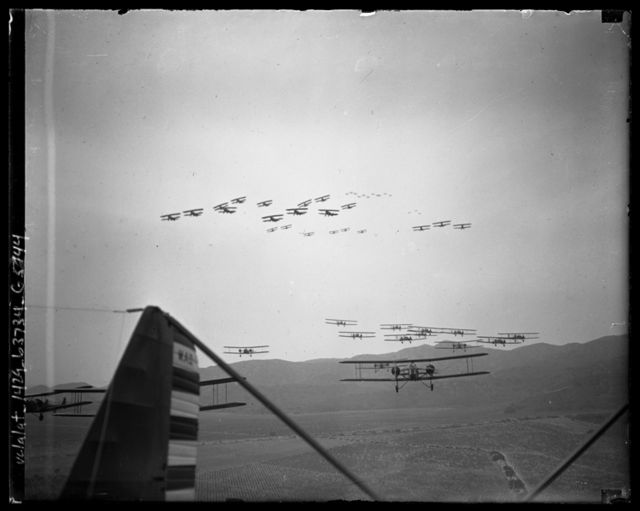The Boeing YB-9 was the first all-metal monoplane bomber aircraft designed for the United States Army Air Corps. The YB-9 was a much enlarged twin-engine development of Boeing's single-engine Model 200 Monomail commercial transport.
Boeing YB-9
Boeing Y1B-9A in flight with a P-26 fighter.
Boeing Y1B-9 with original Curtiss Conqueror liquid-cooled engines
United States Army Air Corps
The United States Army Air Corps (USAAC) was the aerial warfare service component of the United States Army between 1926 and 1941. After World War I, as early aviation became an increasingly important part of modern warfare, a philosophical rift developed between more traditional ground-based army personnel and those who felt that aircraft were being underutilized and that air operations were being stifled for political reasons unrelated to their effectiveness. The USAAC was renamed from the earlier United States Army Air Service on 2 July 1926, and was part of the larger United States Army. The Air Corps became the United States Army Air Forces (USAAF) on 20 June 1941, giving it greater autonomy from the Army's middle-level command structure. During World War II, although not an administrative echelon, the Air Corps (AC) remained as one of the combat arms of the Army until 1947, when it was legally abolished by legislation establishing the Department of the Air Force.

United States Army Air Corps Recruiting Poster
Formations of Keystone LB-7s (lower) and Boeing P-12s (upper) on aerial maneuvers over Burbank, California, 1930
O-46A at Wright Field
B-6A of 1st Bomb Squadron, 9th BG, 1935. The dual stripes on the fuselage denote the aircraft of the squadron commander.







